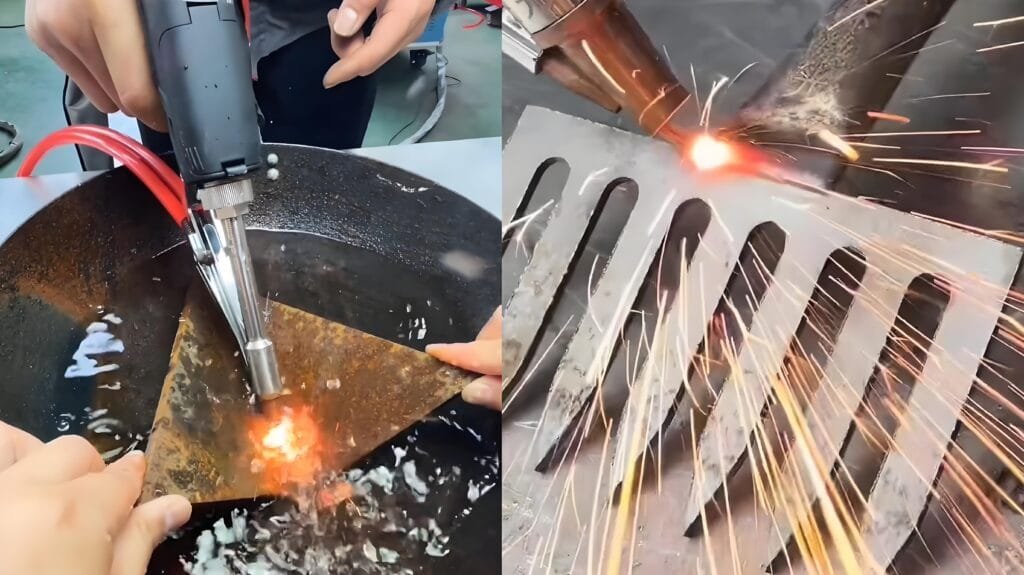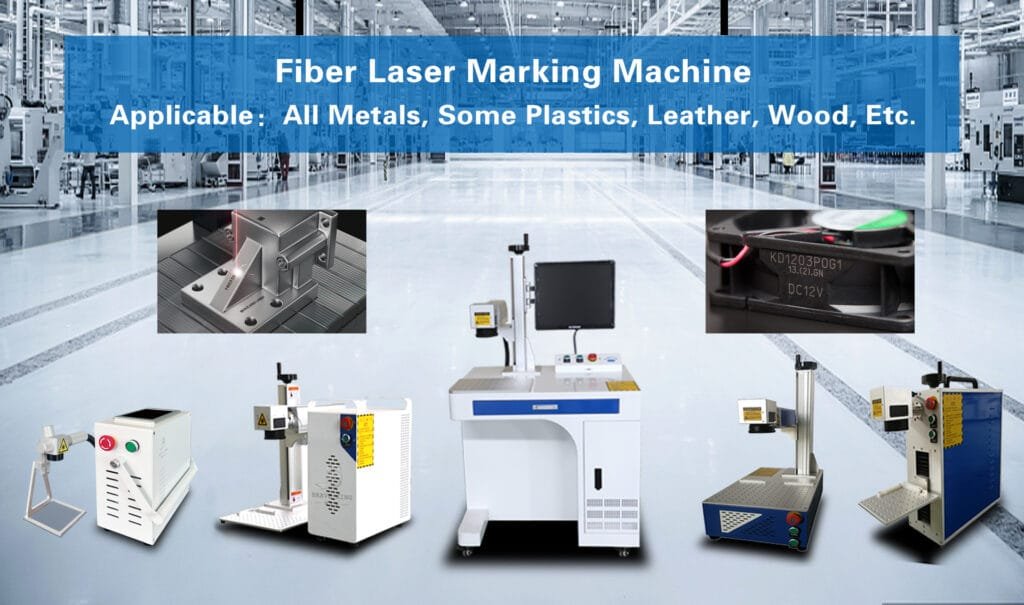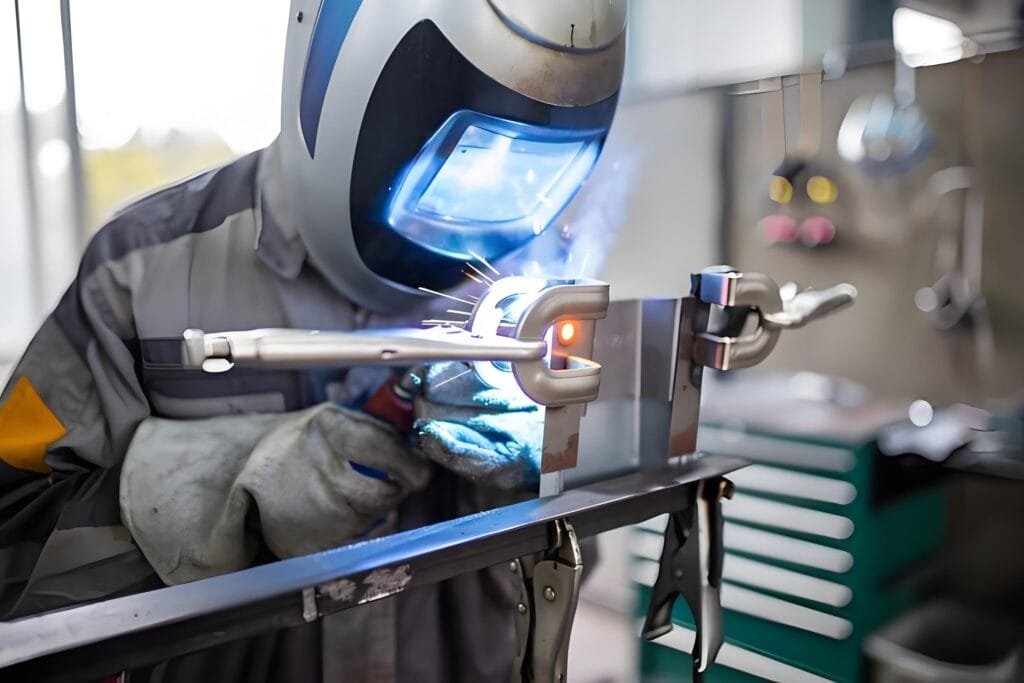
With the continuous advancement of industrial manufacturing technology, handheld fiber laser welding machines are widely used in many industries due to their high efficiency, precision and flexibility. For many companies and individual users, buying a handheld fiber laser welding machine has become an inevitable choice to improve work efficiency and welding quality. However, the price difference of handheld fiber laser welding machines on the market is large, which makes consumers face certain challenges when purchasing. Therefore, it is very critical to understand the multiple factors that affect the handheld fiber laser welding machine price.
First, laser power and frequency are one of the main factors that determine the price. High-power equipment is usually suitable for thicker metal sheets and can provide higher welding efficiency and accuracy, so the price is relatively high. Secondly, the additional functions of the laser welding machine are also an important part of the price, such as autofocus, cooling system, air filtration system, etc. Although these functions increase the complexity of the equipment, they also greatly improve the welding quality and ease of operation. After-sales service and warranty policies should also be considered when purchasing to ensure stability and benefits in long-term use.
Functional analysis of handheld fiber laser welding machine and its applicable industries
- The wide application scenarios of handheld fiber laser welding machines are mainly concentrated in industries that require high-precision welding, especially metal and thin plate welding. It can provide fast and efficient welding solutions in various metal materials. Laser welding can significantly reduce the heat-affected zone during welding through its excellent focusing performance, thereby maintaining the overall strength and stability of the material. This feature has made it widely used in automobiles, aerospace, machinery manufacturing and precision instrument manufacturing.
- Especially in the field of thin sheet metal welding, handheld fiber laser welding machines can accurately control the welding depth to avoid deformation and surface damage of the material. Therefore, in response to these needs, the market price differences of handheld fiber laser welding machines are mainly reflected in power, performance and additional functions of the equipment. Higher-power and feature-rich equipment are usually more expensive, but can provide a wider range of application scenarios. For enterprises in different industries, rationally selecting welding equipment that suits their needs can maximize their return on investment.

Balance between technical parameters and equipment cost performance
- The technical parameters of handheld fiber laser welding machines, such as laser power, frequency and beam quality, directly affect the welding effect and the overall performance of the equipment. Different combinations of technical parameters not only determine the applicability and efficiency of the welding machine, but are also closely related to the price of the equipment. Generally speaking, powerful equipment will float in price, but whether it is worth buying depends on your actual needs.
- For example, if your production tasks are mainly focused on thin plate welding or precision welding of small parts, high-power and high-frequency handheld fiber laser welding machines may not be suitable, and choosing more cost-effective medium and low-power equipment may be sufficient. For industries that need to handle larger welding surfaces or thicker metal materials, investing in high-power, high-frequency, and high-beam-quality laser welding machines will bring better work efficiency and product quality. Therefore, when purchasing, it is necessary to comprehensively consider the balance between the demand for these technical indicators and the price of the equipment to ensure the best cost-effectiveness.
The impact of intelligent control systems on equipment prices
- Intelligent control systems are an increasingly common additional feature in modern handheld fiber laser welding machine. These intelligent systems can be precisely controlled through computer programs and automatically adjust laser power, frequency, speed and other parameters to optimize the welding effect. The addition of the intelligent control system has significantly improved the welding accuracy and ease of operation, and is especially suitable for industries that require high-precision and high-efficiency production. However, the introduction of this type of system will also directly push up the price of the equipment.
- For example, some advanced handheld fiber laser welding machines are equipped with fully automatic adjustment functions, which can automatically optimize laser parameters according to different welding objects and material types, reduce manual intervention, and improve production efficiency. For multi-variety, small-batch welding tasks, intelligent control systems can undoubtedly save a lot of time and labor costs. Therefore, although these smart functions will increase the initial investment cost, in the long run, they can bring higher production benefits to the enterprise by improving production efficiency and welding quality. When selecting equipment with an intelligent control system, users need to evaluate its impact on overall production to ensure return on investment.

Purchase advice: Choose a handheld fiber laser welding machine based on your needs and budget
When purchasing a handheld fiber laser welding machine, the most important consideration is the use scenario and actual needs of the equipment. For companies that require high-precision welding and multi-functional operation, it would be ideal to choose high-end models with additional functions such as autofocus and angle adjustment. Although such equipment is more expensive, the functions and performance advantages it provides can improve production efficiency over a long period of time. For small companies with tight budgets or simpler welding tasks, you can consider choosing basic equipment to reduce unnecessary additional functions and reduce initial investment.
However, when purchasing equipment, you should not only pay attention to the initial cost, but also consider the long-term use cost of the equipment, including factors such as power consumption, parts replacement and repair. The maintenance and service costs of the equipment are also key factors affecting the overall expenditure, so it is recommended that consumers give priority to brands that provide good after-sales service when choosing. Understanding whether the supplier can provide long-term technical support and timely maintenance services will help you get a quick solution when the equipment fails and avoid losses caused by downtime.


